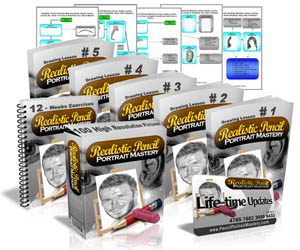Tips and Techniques for Colored Pencil Artists
Colored pencils have become a very popular medium for budding new artists. Beginner artists using this medium find it much easier to express their creativity; mainly because of the control and convenience colored pencils offer. Other mediums like oil paint for instance, appear to present much bigger challenges for new artists. Working with colored pencil is a great way to get your creative juices flowing.
Let’s begin our exploration of the colored pencil medium by explaining some of the popular techniques many artists use.
Hatching: Hatching is basically the drawing of closely spaced parallel lines. You can vary the length, angle and spacing of the lines to produce different effects.
Cross-Hatching: First lay down strokes in a horizontal direction, and then overlap in a vertical direction, followed by a diagonal stroke.
Scumbling: Using a sharp pencil move in a circular motion with light pressure, and begin to overlap the circles as you move along. This technique requires a lot of time and patience but the final result is quite rewarding.
Burnishing: When you place many layers of color over another using a lot of pressure until the “tooth” of the paper is no longer able to hold pigment, resulting in a smooth surface. Do not apply too much pressure as you can break your pencil point or damage your paper. This technique works best when using a paper with a good amount of texture or “tooth”.
Shading: Use the side of your pencil and use back and forth sweeping motions to cover the desired area. Vary the amount of pressure to create different effects.
Colored Pencil Tips
The type of paper that you choose for your colored pencil art depends on your style of drawing. Every artist is different so it really is best to experiment. Paper comes in a variety of textures, otherwise known as its “tooth”. There are rough surfaces with a lot of texture as well as smooth surfaces with very little texture. Rougher textures are better for applying multiple layers; where as smooth surfaces are excellent for blending. You should purchase a few different types of papers to determine the type of surface you are most comfortable working with. Some good choices to consider for your colored pencil drawings are Rising Stonehenge, Canson Mi Tientes, and Strathmore.
When choosing your pencils, it’s best not to go for cheap pencils, because you may be disappointed with the results. Cheaper pencils do not have as much pigment and therefore will not produce the brilliance in color you are after. Many artists find the Prismacolor Colored Pencils to be a great choice. Prismacolor pencils have a soft lead that goes on smooth. When built up in layers they produce an almost paint like appearance.
Wax bloom, a build up of wax on the surface of your paper, is something you will more than likely become aware of as you work with the colored pencil medium. The wax in your colored pencil can rise to the surface and form a white hazy buildup that can dull your finished piece. There are two approaches for dealing with wax bloom.
One approach is to try and prevent it from happening in the first place. Spraying a workable fixative over the surface after you have finished your drawing may help. There is some concern however that fixatives may alter the colors in a drawing, so it’s best to try this on a practice drawing first. The other method is to actually wait a week or so after you complete the drawing. If you see the wax buildup, grab some soft tissue or cotton balls, and rub the surface to remove the wax. Don’t apply too much pressure as you can smear your drawing.
Keep a large soft brush handy for brushing away unwanted scraps from your drawings. Artists use a number of things for this purpose, from horsehair drafting brushes, to 2″ household paint brushes.
Experiment with various types of erasers to see what type you are most comfortable with. Artists use a variety of tools for removing pigment or fixing mistakes. Kneaded erasers, plastic erasers, electric erasers, and even tape may work well for you.
For softening hard edges or blending, purchase some blending stumps or a colorless blender at your local art store.
Try and avoid electric sharpeners as they tend to eat away too much of the pencil. Many artists keep a piece of sandpaper handy and use that to sharpen the pencil point.
Never be afraid to try different things with your colored pencil art. Try various papers, pencils, etc.
Look for some local colored pencil workshops in your area. You will be amazed at the amount of great information and tips you will discover from your teacher and classmates.



